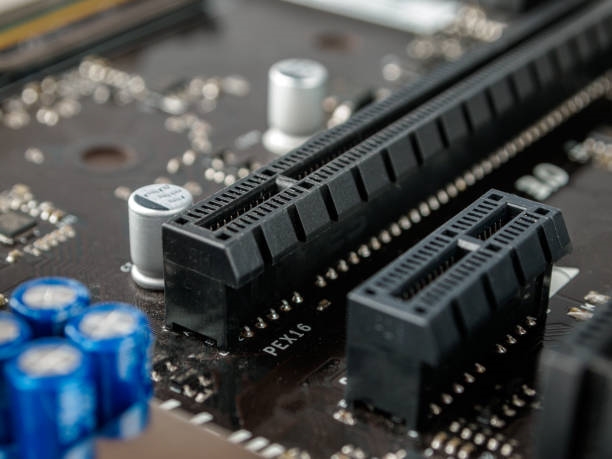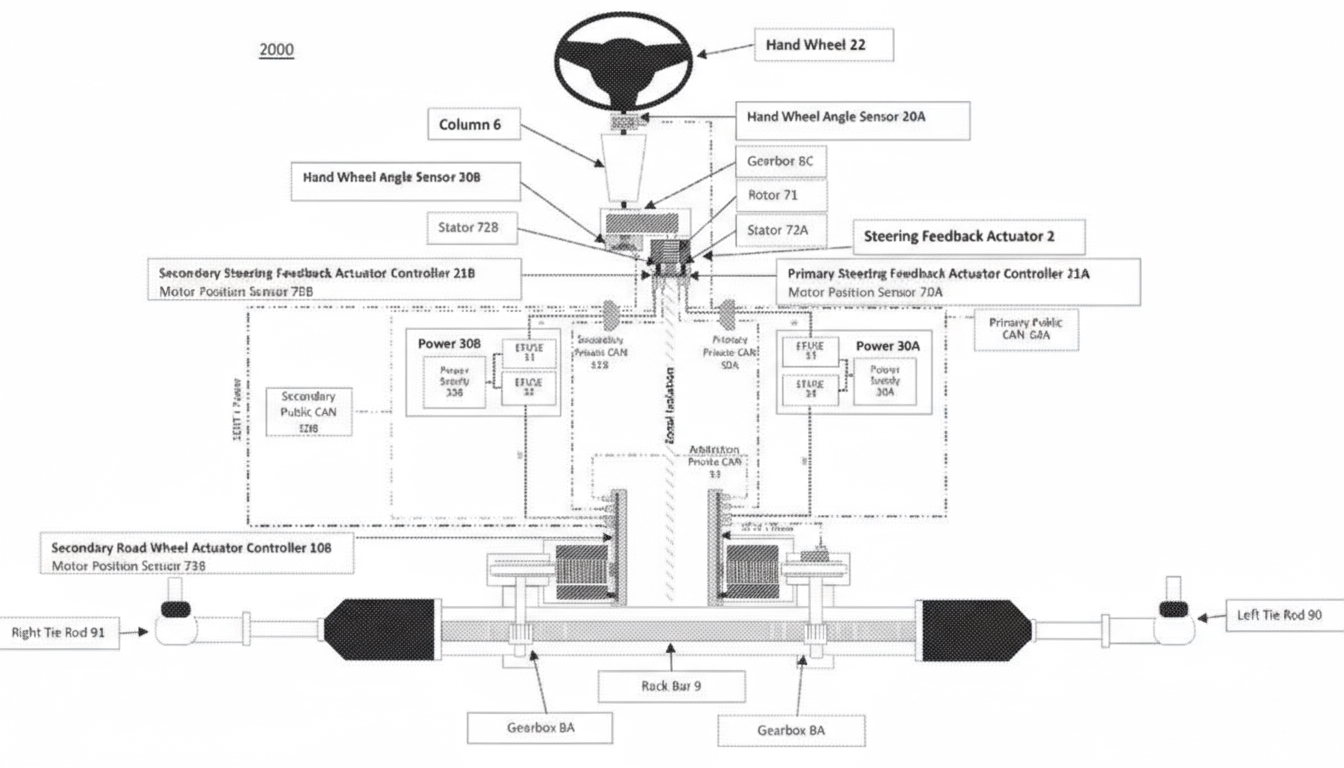The global electric vehicle (EV) market is expanding, with significant growth in new energy vehicle adoption. In June 2022, the EU announced a preliminary agreement among its 27 member states to ban the sale of internal combustion engine vehicles by 2035. This article explores the role of insulated gate bipolar transistor (IGBT) modules in EV powertrains, focusing on the characteristics of bonding wire materials used in these critical components.
Electric Powertrain System Overview
The electric powertrain system enables EV operation. The motor controller converts direct current (DC) from the traction battery into alternating current (AC) through inversion, driving the motor. The motor transforms electrical energy into mechanical energy, which is transmitted to the wheels via a transmission system, primarily a reducer. Conversely, kinetic energy recovery converts mechanical energy from the wheels back into electrical energy stored in the battery.
Components of the Electric Powertrain
The EV¡¯s ¡°three electric systems¡±¡ªtraction battery, drive motor, and motor controller¡ªcomprise over 70% of an EV¡¯s total cost and determine its performance. The powertrain system typically includes the drive motor assembly (converting battery energy into mechanical rotation), the controller assembly (managing motor operation through power semiconductor hardware and software), and the transmission assembly (reducing speed and increasing torque for efficient operation).
IGBT Module Functionality
In the motor controller, the IGBT module is the core component of the inverter. It operates as an ideal switch, ignoring transient and parasitic effects. Multiple IGBT chips are arranged in parallel and series within the module. By rapidly switching these chips, the module alters the direction and frequency of the current, converting DC into the desired AC output.
Bonding Wire Materials in IGBT Chips
IGBT chips, their terminals, diodes, and insulating substrates are electrically connected using wire bonding, a key method for internal electrical interconnection in IGBT power modules. Common bonding wire materials include aluminum, gold, silver, copper, aluminum ribbons, copper sheets, and aluminum-clad copper wires. Each material has distinct properties affecting performance, reliability, and cost.
Aluminum Wire Bonding
Aluminum wire bonding is the most widely used chip interconnection technique due to its mature process and low cost. Aluminum wires are classified as fine (diameter <100 ¦Ìm) or thick (100¨C500 ¦Ìm). A 500 ¦Ìm thick aluminum wire can handle approximately 23 A of DC current. However, aluminum¡¯s thermal expansion coefficient (23¡Á10?? K?1) differs significantly from silicon, leading to heat accumulation and thermal stress during power cycling. This can cause wire fractures or bond surface detachment, potentially leading to module failure. High current demands may require numerous wires, increasing the risk of cracks at bonding surfaces.
Aluminum ribbon bonding addresses these issues with a larger cross-sectional area, improving reliability and current-carrying capacity. Ribbons reduce skin effect in high-frequency operations, decrease package thickness, and enhance heat dissipation due to their larger surface area. However, they cannot be bent at large angles.
Copper Wire Bonding
Copper wires offer lower resistivity and higher thermal conductivity than aluminum, improving conductivity and heat dissipation. A 400 ¦Ìm copper wire can handle approximately 32.5 A of DC current, a 71% improvement over aluminum. Copper is ideal for compact, high-power-density modules with fast heat dissipation needs. However, since chip surfaces are typically aluminum alloys, copper bonding requires pre-bonding silver plating or deposition, increasing cost and complexity. Copper¡¯s higher thermal expansion coefficient causes thermal stress accumulation during power cycling, risking wire detachment or chip surface cracks.
Aluminum-Clad Copper Wire Bonding
Aluminum-clad copper wires combine the benefits of both materials, featuring a 25¨C35 ¦Ìm aluminum coating over a copper core. The aluminum surface eliminates the need for chip surface plating, enhancing reliability. These wires offer better conductivity and thermal performance than aluminum, increasing bonding wire reliability and extending IGBT module lifespan.
Gold Wire Bonding
Gold wire bonding is primarily used in high-integration IC chip packaging due to its high thermal conductivity, low resistivity, and strong conductivity. Its thermal expansion coefficient (14.2¡Á10?? K?1) is the lowest among common bonding materials, offering better compatibility with silicon chips. However, its high cost limits widespread use in semiconductor packaging.
Silver Wire Bonding
Silver wires have lower resistivity and higher thermal conductivity than gold, providing excellent conductivity and heat dissipation at a lower cost. However, their high thermal expansion coefficient raises concerns about bonding reliability.
Conclusion
The global electric vehicle (EV) market is expanding, with significant growth in new energy vehicle adoption. In June 2022, the EU announced a preliminary agreement among its 27 member states to ban the sale of internal combustion engine vehicles by 2035. This article explores the role of insulated gate bipolar transistor (IGBT) modules in EV powertrains, focusing on the characteristics of bonding wire materials used in these critical components.
Electric Powertrain System Overview
The electric powertrain system enables EV operation. The motor controller converts direct current (DC) from the traction battery into alternating current (AC) through inversion, driving the motor. The motor transforms electrical energy into mechanical energy, which is transmitted to the wheels via a transmission system, primarily a reducer. Conversely, kinetic energy recovery converts mechanical energy from the wheels back into electrical energy stored in the battery.
Components of the Electric Powertrain
The EV¡¯s ¡°three electric systems¡±¡ªtraction battery, drive motor, and motor controller¡ªcomprise over 70% of an EV¡¯s total cost and determine its performance. The powertrain system typically includes the drive motor assembly (converting battery energy into mechanical rotation), the controller assembly (managing motor operation through power semiconductor hardware and software), and the transmission assembly (reducing speed and increasing torque for efficient operation).
IGBT Module Functionality
In the motor controller, the IGBT module is the core component of the inverter. It operates as an ideal switch, ignoring transient and parasitic effects. Multiple IGBT chips are arranged in parallel and series within the module. By rapidly switching these chips, the module alters the direction and frequency of the current, converting DC into the desired AC output.
Bonding Wire Materials in IGBT Chips
IGBT chips, their terminals, diodes, and insulating substrates are electrically connected using wire bonding, a key method for internal electrical interconnection in IGBT power modules. Common bonding wire materials include aluminum, gold, silver, copper, aluminum ribbons, copper sheets, and aluminum-clad copper wires. Each material has distinct properties affecting performance, reliability, and cost.
Aluminum Wire Bonding
Aluminum wire bonding is the most widely used chip interconnection technique due to its mature process and low cost. Aluminum wires are classified as fine (diameter <100 ¦Ìm) or thick (100¨C500 ¦Ìm). A 500 ¦Ìm thick aluminum wire can handle approximately 23 A of DC current. However, aluminum¡¯s thermal expansion coefficient (23¡Á10?? K?1) differs significantly from silicon, leading to heat accumulation and thermal stress during power cycling. This can cause wire fractures or bond surface detachment, potentially leading to module failure. High current demands may require numerous wires, increasing the risk of cracks at bonding surfaces.
Aluminum ribbon bonding addresses these issues with a larger cross-sectional area, improving reliability and current-carrying capacity. Ribbons reduce skin effect in high-frequency operations, decrease package thickness, and enhance heat dissipation due to their larger surface area. However, they cannot be bent at large angles.
Copper Wire Bonding
Copper wires offer lower resistivity and higher thermal conductivity than aluminum, improving conductivity and heat dissipation. A 400 ¦Ìm copper wire can handle approximately 32.5 A of DC current, a 71% improvement over aluminum. Copper is ideal for compact, high-power-density modules with fast heat dissipation needs. However, since chip surfaces are typically aluminum alloys, copper bonding requires pre-bonding silver plating or deposition, increasing cost and complexity. Copper¡¯s higher thermal expansion coefficient causes thermal stress accumulation during power cycling, risking wire detachment or chip surface cracks.
Aluminum-Clad Copper Wire Bonding
Aluminum-clad copper wires combine the benefits of both materials, featuring a 25¨C35 ¦Ìm aluminum coating over a copper core. The aluminum surface eliminates the need for chip surface plating, enhancing reliability. These wires offer better conductivity and thermal performance than aluminum, increasing bonding wire reliability and extending IGBT module lifespan.
Gold Wire Bonding
Gold wire bonding is primarily used in high-integration IC chip packaging due to its high thermal conductivity, low resistivity, and strong conductivity. Its thermal expansion coefficient (14.2¡Á10?? K?1) is the lowest among common bonding materials, offering better compatibility with silicon chips. However, its high cost limits widespread use in semiconductor packaging.
Silver Wire Bonding
Silver wires have lower resistivity and higher thermal conductivity than gold, providing excellent conductivity and heat dissipation at a lower cost. However, their high thermal expansion coefficient raises concerns about bonding reliability.
Conclusion
Different bonding wire materials serve distinct applications, each with trade-offs. Wire bonding introduces parasitic inductance, and multiple wires can cause proximity effects and uneven current distribution. Ribbon bonding mitigates these issues but increases process complexity and cost. Thermal expansion mismatches lead to stress accumulation, affecting device reliability. Selecting bonding wires requires balancing process feasibility, power device reliability, and cost considerations.
 ALLPCB
ALLPCB







